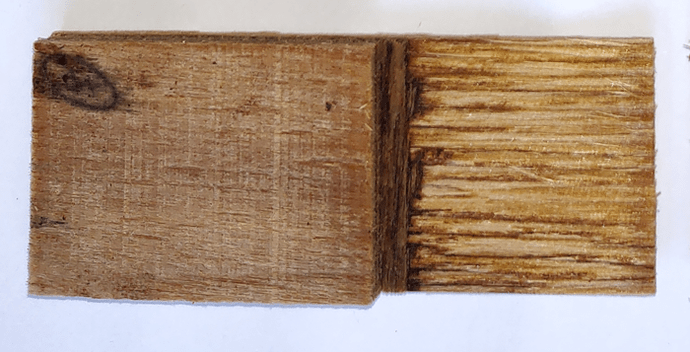Researchers Create a Water-Resistant Three-Layer Plywood Using Glucose and Citric Acid
May 12 2022Reviewed by Bethan Davies
The most extensively utilized materials for building décor, home furniture, and floors are composite wood products that are available in large sheets.
Citric acid and glucose produce a wood glue that creates strong, water-resistant three-layer plywood. Image Credit: Adapted from ACS Applied Materials & Interfaces, 2022.
However, the resins and glues that are intact with the fiberboard, particleboard, and plywood generally comprise formaldehyde and could discharge this carcinogen into the air.
To design a harmless adhesive, scientists reporting in ACS Applied Materials & Interfaceshave combined glucose and citric acid — sugar and an orange juice ingredient — into a powerful and water-resistant wood glue for plywood.
To create plywood, manufacturers glue thin layers of wood and further cure the material under heat and pressure, thereby making huge and flexible panels. One of the general adhesives is a urea-formaldehyde resin since it is low-cost and bonds firmly to the wood.
But formaldehyde emissions coming from plywood with this kind of resin have increased health and environmental issues. Earlier studies have displayed those solutions of sucrose, a two-unit sugar comprised of fructose and glucose, and citric acid forms a natural and water-resistant wood glue.
However, a zinc chloride catalyst is needed to reduce the energy usage for the plywood curing, which also decreases the strength of the adhesive. Hence, Hong Lei and collaborators wished to note if pure citric acid and glucose could produce a powerful adhesive with a less energy-intensive curing process.
Solutions of glucose and varying amounts of citric acid were subjected to heating by the researchers into a sticky liquid that was applied to poplar veneers. Further, they stacked three veneers and then pressed them into a single sheet at 392 °F for 6 minutes.
The sheets were then cut into smaller pieces for strength tests and, under pressures greater than 101 psi, the plywood samples all broke along the wood fibers and not at the glued seams. These outcomes fulfill the standard need for plywood in China.
On soaking the plywood samples in hot or boiling water, only the ones created with citric acid to glucose ratios more than 0.6 exhibited adhesive strengths that fulfilled the standard needs.
The scientists attribute these outcomes to the increase in ester links between citric acid and wood, thereby increasing the water resistance and wood-binding strength. Citric acid–glucose adhesives have proven to be efficient for the wood products industry, say the researchers.
The study authors acknowledge financial support from the National Natural Science Foundation of China, the Yunnan Provincial Natural Science Foundation, the 111 project and the French National Research Agency (ANR).
